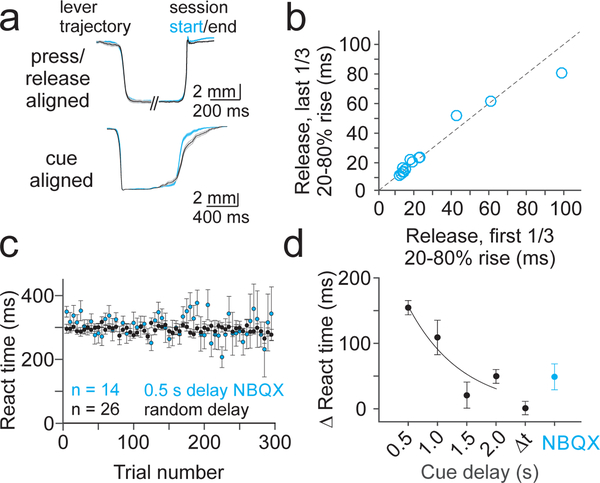Figure 2.
Learning requires synaptic transmission in lobule simplex. A) Average lever kinematic traces from an example 0.5 s cue prediction session after application of NBQX (300 μM), CPP (30 μM) and MCPG (30 μM). Top, traces aligned separately to press and release showing no difference in kinematics from beginning (blue, first 1/3 of trials, n=190) to end (black, last 1/3 of trials, n=190) of the session. Bottom, traces aligned to the cue show that lever releases do not occur sooner in the last 1/3 of trials (black) as compared to the first 1/3 of trials (blue). Shaded area is ±SEM across trials. B) Summary of average lever release times (20–80% rise time) across NBQX 0.5s cue prediction sessions (n=14 sessions, 6 mice). C) Summary of mean reaction time for all 0.5 s cue prediction sessions where NBQX (n=14) CPP (n=14) and MCPG (n=8) were applied locally to LS (blue; n=6 mice) compared to summary of cue reaction sessions (black; replotted from Fig 1G). Error bars are ± SEM across sessions. D) Summary of mean change in reaction time from the beginning to the end of NBQX 0.5s cue prediction sessions (blue; n=10 sessions, 6 mice) compared to cue prediction and reaction sessions (replotted from Fig. 1H). Error bars are ± SEM across sessions.

